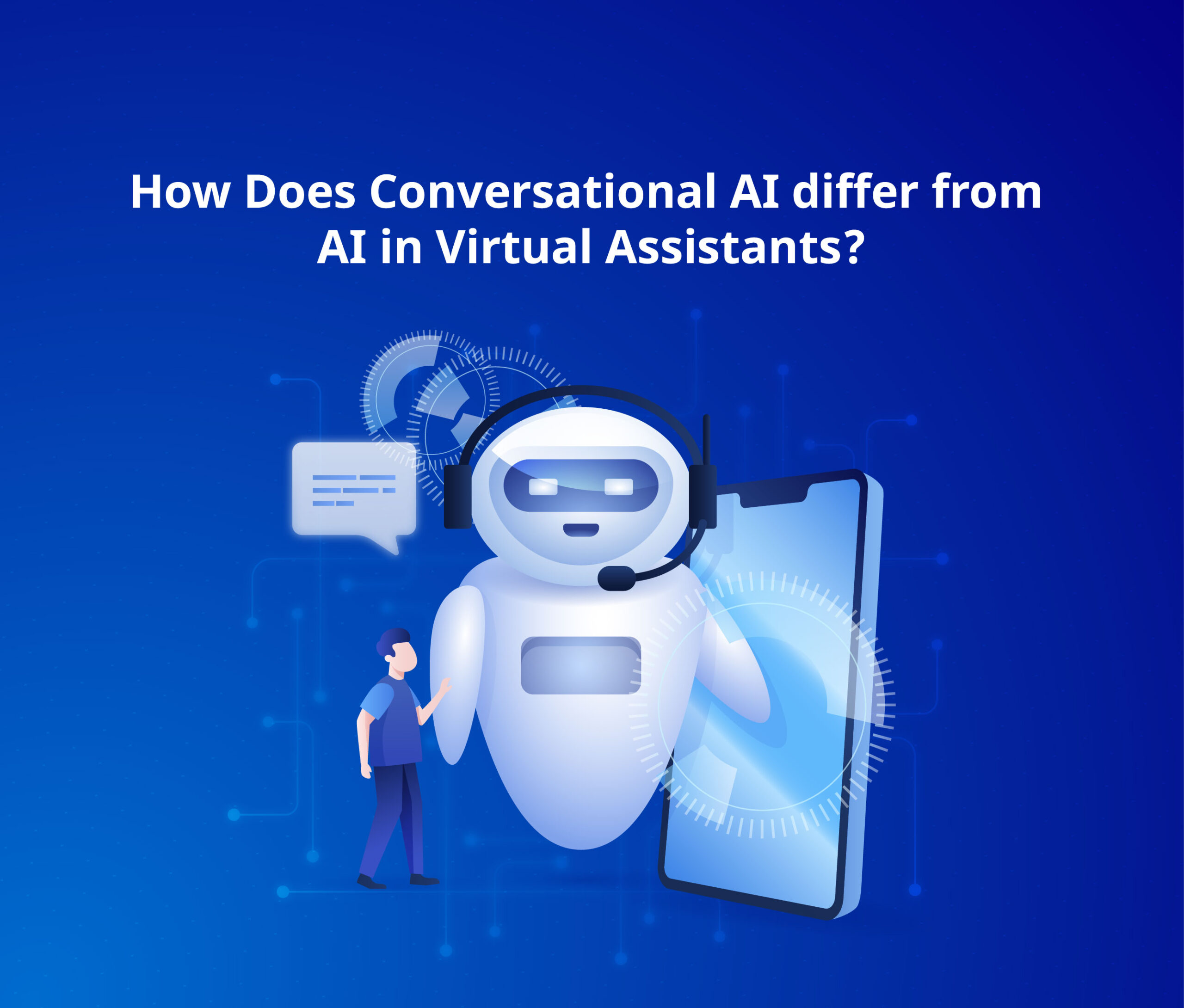You have already seen the power of an AI virtual assistant if you have ever used Siri or Alexa.
However, did you know that companies are increasingly adopting artificial intelligence (AI) virtual assistants to support everything from increasing sales to offering superior customer service?
This blog post will explain what artificial intelligence virtual assistants are, how they operate, and the advantages they provide to companies in many sectors. Let us first define what AI in virtual assistants actually means.
What is Virtual Assistant Artificial Intelligence?
AI in virtual assistants refers to smart software programs that employ advanced technologies like natural language processing (NLP) to grasp and respond to user commands, whether in voice or text. These virtual assistants are crafted to emulate human-like interactions, delivering personalized assistance across a range of tasks.
Driven by AI, virtual assistants are versatile and capable of answering queries, providing information, scheduling appointments, making recommendations, and performing various other tasks. Their functionality relies on AI algorithms and machine learning, enabling them to interpret user inputs, analyze data, and generate contextually appropriate responses.
Virtual assistants powered by AI manifest in diverse forms, including chatbots, voice assistants, AI avatars, and those specialized for specific domains. They find applications across various sectors such as customer service, healthcare, finance, e-commerce, and beyond, enhancing user experiences through intelligent and responsive interactions.
How Does Conversational AI differ from AI in Virtual Assistants?
 Conversational AI serves as a foundational element in virtual assistant AI technology. A robust AI virtual assistant solution relies on effective conversational AI and NLP (Natural Language Processing) technology. This ensures that virtual assistants can comprehend and respond to queries in a natural manner, avoiding a robotic or rigid tone.
Conversational AI serves as a foundational element in virtual assistant AI technology. A robust AI virtual assistant solution relies on effective conversational AI and NLP (Natural Language Processing) technology. This ensures that virtual assistants can comprehend and respond to queries in a natural manner, avoiding a robotic or rigid tone.
Platforms like ChatGPT or Bard showcase the practical application of natural-language responses, generating interest in incorporating AI into daily routines. Conversational AI offers practical advantages for businesses, including the provision of prompt and accurate answers to common customer queries, retrieval of relevant information, and smooth closure of interactions. Additionally, it contributes to enhancing the customer experience by efficiently addressing common questions and identifying patterns in customer queries for potential improvements. As conversational AI gains prominence across various industries, its adoption proves beneficial for optimizing operations in customer service and sales. If you haven’t yet integrated conversational AI into your operations, you might be overlooking an opportunity to enhance your overall efficiency.
Example of AI in Virtual Assistants
AI virtual assistants come in various types, each boasting distinctive features and capabilities. Here are examples of the most widely used categories:
- Customer Service AI Virtual Assistants: Customer service-oriented virtual assistants excel in providing instant responses to customer inquiries. They can deflect common questions, enabling customers to find answers independently.
- Sales AI Virtual Assistants: Sales-focused virtual assistants share similarities with customer service counterparts. They can answer customer queries on checkout pages, addressing concerns such as shipping or delivery details.
- Consumer AI Virtual Assistants: Consumer-centric virtual assistants, exemplified by Siri or Alexa, cater to personal needs. These virtual assistants are widely used for tasks such as turning on lights or checking the weather. They showcase the everyday applications of AI in enhancing user experiences and simplifying routine tasks.
How to Select the Right AI Virtual Assistant?
When considering AI virtual assistants, it’s crucial to ensure they align with your specific needs. In a professional setting, seek virtual assistants capable of automating repetitive tasks and enhancing tasks like content creation, ensuring seamless integration with your existing software. The scalability of these AI programs is also essential to accommodate your team’s size and growth.
On the home front, a virtual assistant should seamlessly integrate with personal devices and home appliances, facilitating tasks from brewing coffee to adjusting lighting. Look for personal AI assistants that complement your lifestyle.
Moreover, exploring AI project management tools as well as productivity tools can elevate efficiency. From project execution to process mapping and content creation, selecting software tailored to your requirements provides additional avenues to save time and boost productivity.
Benefits and Challenges of AI Virtual Assistants
 AI virtual assistants bring numerous advantages. They enhance productivity by handling routine tasks, allowing humans to focus on more intricate responsibilities. Additionally, they offer cost savings by automating customer service functions and providing 24/7 assistance for customer inquiries.
AI virtual assistants bring numerous advantages. They enhance productivity by handling routine tasks, allowing humans to focus on more intricate responsibilities. Additionally, they offer cost savings by automating customer service functions and providing 24/7 assistance for customer inquiries.
However, challenges do still exist. Privacy concerns arise as AI virtual assistants often require access to sensitive data. Despite advancements, these assistants may struggle with complex tasks and lack the personal touch that human interaction provides.
Closing Thoughts
The future of AI in virtual assistants is marked by their evolving capabilities, driven by advancements in speech recognition and NLP. As voice recognition technology improves, virtual assistants are expected to penetrate deeper into business workflows. Gartner predicts that by 2025, around 50% of knowledge workers will use a virtual assistant daily, which is indicative of their increasing ubiquity. However, concerns about privacy and security risks are growing, urging companies to address these issues transparently in their policies to foster user trust.





